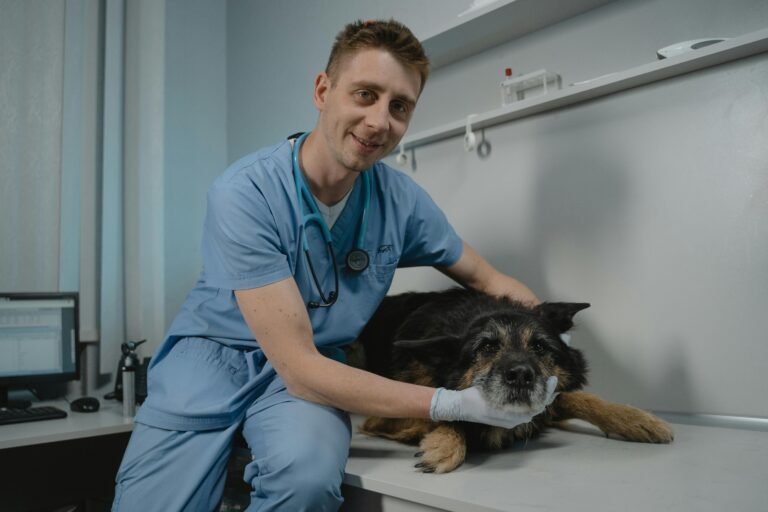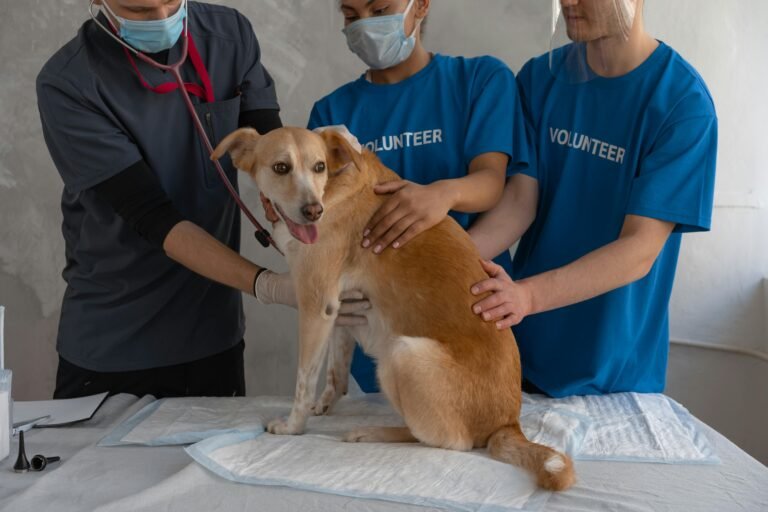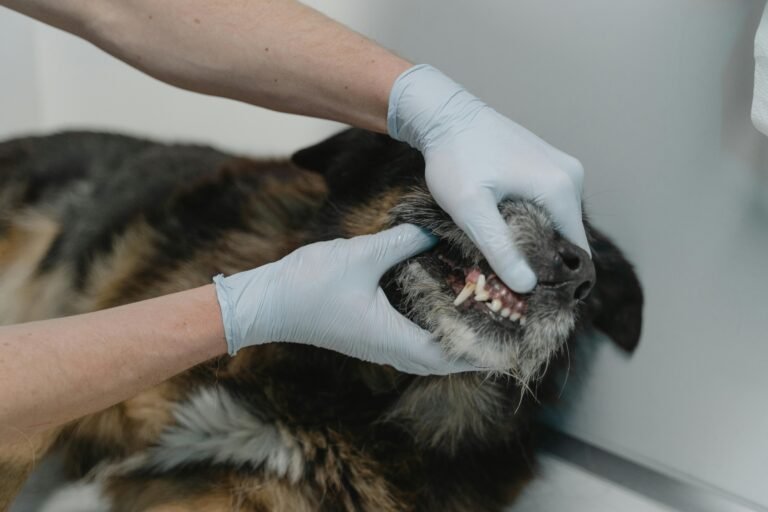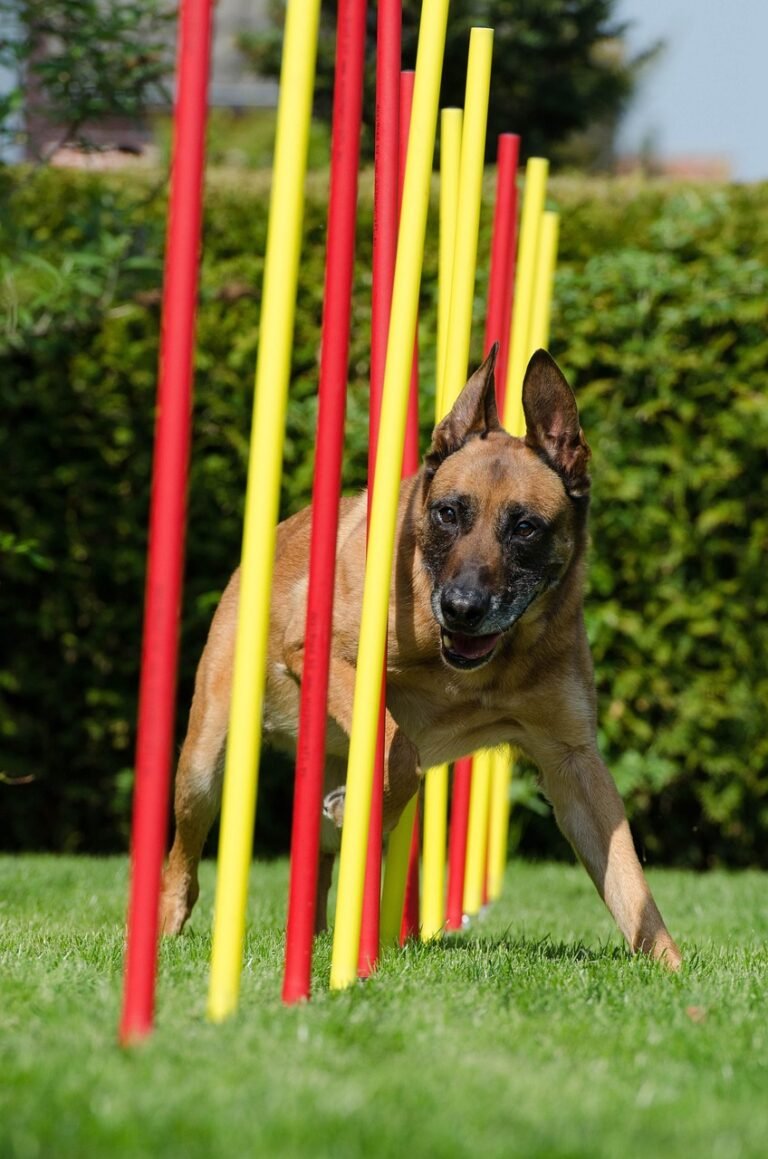Understanding Your Dog’s Needs
As a first-time dog owner, understanding your new companion’s basic physical and emotional needs is paramount to ensuring a fulfilling life for both of you. A well-rounded approach to meeting these needs helps facilitate a strong bond between you and your dog while promoting overall health and happiness.
Proper nutrition is one of the cornerstones of your dog’s well-being. Choosing high-quality dog food tailored to your dog’s age, size, and breed is essential. Expert advice often recommends consulting with a veterinarian to determine the appropriate diet that meets your dog’s specific needs. This will not only support their physical health but can also prevent potential health issues in the future.
In addition to nutrition, regular exercise plays a crucial role in your dog’s development. Different breeds have varying exercise requirements, so familiarizing yourself with your dog’s specific needs is important. Daily walks, playtime, and engaging activities like fetching or agility training can help maintain their physical fitness while also providing necessary mental stimulation. Exercise is linked to better behavior and mood, highlighting its importance.
Socialization is another key aspect that must not be overlooked. Exposing your dog to different environments, people, and other animals during their first six months can greatly reduce anxiety and behavioral issues later on. Consider enrolling your dog in obedience classes or dog parks to foster social experiences in a safe environment.
Mental stimulation is equally important. Engaging your dog with puzzle toys, training sessions, and interactive games can help fulfill their need for mental engagement. This combination of physical and mental activities will help your dog thrive while contributing positively to their emotional health.
Understanding these basic needs lays a solid foundation for a happy and healthy relationship with your dog. By prioritizing their nutrition, exercise, socialization, and mental stimulation, you will foster an environment conducive to their well-being and happiness.
Preparing Your Home for a New Dog
Bringing a new dog into your home is an exciting and transformative experience. However, it also comes with the responsibility of ensuring that your living environment is safe and accommodating for your new pet. The first step in preparing your home for a dog is dog-proofing the space. This involves removing or securing hazardous items that could potentially harm your pet. Common household items such as cleaning supplies, medications, and electrical cords should be stored in cabinets or areas that are inaccessible to dogs.
Additionally, it is crucial to secure popular areas within your home where your dog will frequent. Gates can be effective in limiting access to stairways or rooms without supervision. It is also advisable to remove or reposition fragile items, such as vases or picture frames, to prevent accidents. More often than not, new dogs tend to explore their surroundings using their mouths, so ensuring that small objects that can be swallowed are out of reach is paramount.
Creating a comfortable space for your dog to acclimate is equally important. Designate a specific area in your home as the dog’s personal space, equipped with a bed, water bowl, and toys. This area should be quiet and away from the hustle and bustle of daily activities, allowing your pet to feel secure. Gradually introduce the dog to various parts of your home, but allow them to explore at their own pace to reduce stress. Remember, each dog is unique, and some may require more time to adapt to their new environment than others.
In summary, preparing your home for a new dog is not only about creating a safe environment but also about helping your new companion feel welcomed and comfortable. With careful planning and consideration, you can ensure that your home is a secure haven for your furry friend, setting the foundation for a harmonious relationship.
Choosing the Right Veterinarian and Health Care Basics
As a first-time dog owner, selecting a reputable veterinarian is one of the most significant decisions you will make for your new pet. An appropriate veterinarian not only provides medical care but also becomes an essential resource for advice on general canine health and behavior. Look for a clinic that has a clean environment, a professional and friendly staff, and preferably, a veterinarian with experience in your dog’s breed. Online reviews and personal recommendations from other pet owners can also guide your choice.
When it comes to canine health care, routine check-ups play a vital role in ensuring your dog remains healthy and happy. Typically, puppies require vaccinations at several intervals throughout their first year. Core vaccines may include those for rabies, distemper, parvovirus, and adenovirus, among others. Be sure to discuss the vaccination schedule with your veterinarian. Additionally, consider spaying or neutering your dog, which can help prevent certain health issues and unwanted behaviors while also contributing to reducing pet overpopulation.
Regular examinations can help detect early signs of health problems, and your veterinarian can establish a baseline for your dog’s overall health, which may assist later in diagnosing any potential issues. Moreover, routine dental care and parasite prevention—including flea, tick, and heartworm treatment—are crucial components of maintaining your pet’s health.
Despite your best efforts to keep your pet healthy, emergencies can occur. It is essential to be prepared for such situations by knowing the location of the nearest veterinary emergency clinic. Familiarize yourself with signs that indicate your pet requires immediate medical attention, such as persistent vomiting, difficulty breathing, or severe lethargy. Understanding these basics will help you feel more capable and provide a better quality of life for your new canine companion.
Establishing a Training Routine
Training is a critical aspect of dog ownership, especially for first-time owners who are tasked with the responsibility of nurturing a well-behaved companion. The initial six months set the framework for a dog’s future behavior, making the establishment of a structured training routine vital. One of the first goals should be to introduce basic commands such as “sit,” “stay,” and “come.” These commands form the building blocks of communication between the owner and the dog, fostering a trusting relationship.
House training is another essential element that requires patient guidance and consistency. It is advisable to establish a regular schedule for bathroom breaks, allowing the dog to gradually learn that going outdoors is expected. Observing the dog’s behavior for signs that they need to relieve themselves can assist in preventing accidents indoors. Using positive reinforcement, such as treats or verbal praise, when the dog successfully goes outside will strengthen their understanding of the desired behavior.
Socialization techniques are equally important during this formative period. Exposing your dog to various environments, people, and other animals can help them develop into a well-adjusted adult. It is beneficial to introduce your dog to new experiences alongside basic training. Consistency in both training and socialization efforts ensures that your dog feels secure and knows what to anticipate in different settings.
Moreover, utilizing positive reinforcement methods, which reward desired behaviors rather than punishing undesired ones, can make learning enjoyable for your dog. This approach not only increases the likelihood that your dog will repeat the desired actions but also strengthens the bond between you and your pet. However, should challenges arise during training—such as behavioral issues that seem unmanageable—consulting with a professional trainer or attending obedience classes may be advantageous. The guidance of an expert can offer tailored strategies to effectively navigate any hurdles experienced during this crucial training period.
Building a Strong Bond with Your New Dog
Establishing a strong bond with your new dog is essential for ensuring a harmonious coexistence. This bond not only enhances the quality of life for both the owner and the pet but also lays the foundation for effective training and communication. One of the primary methods to foster this relationship is through engaging activities that promote interaction and trust.
Playtime serves as an excellent opportunity to create a connection. Engaging in fun activities, such as fetch or tug-of-war, allows your dog to express their natural instincts while also promoting physical health. These playful interactions build trust and establish a rapport that is crucial in the early stages of your relationship. Furthermore, understanding your dog’s preferred types of play can help in tailoring your activities to their interests, which strengthens the bond even further.
Training is another vital aspect of building a solid relationship. Positive reinforcement training not only helps your dog learn essential commands but also cultivates trust and respect. By setting clear expectations and rewarding good behavior, you create a supportive environment where your dog feels secure. Incorporating short training sessions into your daily routine provides an opportunity for quality interaction, enhancing both communication and your bond.
Quality time is equally important when nurturing your connection with your dog. This can involve leisurely walks, cuddling on the couch, or simply spending time in the same space while engaging in quiet activities. Such moments of togetherness deepen the emotional connection between you and your pet, reinforcing their sense of belonging. Ultimately, consistency in activities like play, training, and shared experiences is key. These efforts collectively foster a strong bond built on trust, love, and understanding, paving the way for a fulfilling partnership with your new canine companion.
Establishing a Routine
For first-time dog owners, establishing a daily routine is crucial for both the dog’s well-being and the owner’s peace of mind. A structured schedule for feeding, bathroom breaks, exercise, and training can significantly enhance the acclimatization process for a new dog. Dogs thrive on consistency and a predictable environment, which helps them feel secure and understand what is expected of them. By setting a routine, you not only provide structure but also foster good behavior and build a lasting bond with your pet.
The first element of this routine is feeding. Dogs typically thrive on a consistent feeding schedule, which aids in digestion and minimizes accidents in the house. Choose specific times for meals each day and offer the same amount of food to help your dog adjust. This consistency allows them to anticipate their next meal and develop healthy eating habits over time.
Bathroom breaks should also be scheduled throughout the day, especially for puppies that may need to go out more frequently. Establishing a designated bathroom routine helps your dog learn where and when it is appropriate to relieve themselves. This systematic approach will make house training more efficient and effective, ultimately minimizing frustration for the dog and owner alike.
Exercise is another fundamental component of an effective routine. Regular walks and playtime not only help expend a dog’s energy but also promote their physical health. Engaging in daily exercise fosters a positive channel for their natural instincts, while also providing an opportunity for training and socialization.
Finally, incorporating training sessions into the routine is essential. Consistent short sessions can help reinforce commands and instill good behavior patterns. An established schedule that includes training, feeding, bathroom breaks, and exercise will ultimately promote a happier and more well-adjusted dog.
Understanding Your Dog’s Behavior
As a first-time dog owner, understanding your new companion’s behavior is crucial for fostering a positive relationship. Dogs communicate through an intricate combination of body language, vocalizations, and other signals, and interpreting these can allow you to respond appropriately to their needs and feelings.
One of the most prominent aspects of canine communication is body language. For instance, a dog that approaches you with a wagging tail and relaxed body posture is generally expressing happiness and eagerness. Conversely, a dog that tucks its tail between its legs or exhibits a stiffened posture may be feeling frightened or insecure. Observing your dog’s ears is also essential; ears held back can indicate submission or fear, while ears perked up may suggest alertness or excitement. Understanding these nuances empowers you to create a supportive environment for your pet.
Vocalizations also provide insight into your dog’s emotions. Barking can serve various purposes; it may be a greeting, an alert, or a sign of discomfort or frustration. Growling and whining further convey feelings of distress or assertiveness. By paying attention to the context of these sounds, you can better gauge your dog’s feelings and respond accordingly. For instance, excessive barking at passersby might indicate excitement or territorial instincts, which can be managed with appropriate training and socialization.
Additionally, consider observing your dog’s behavior in various situations. Are they social or do they prefer solitude? Do they show signs of anxiety when left alone? These behaviors can guide you in addressing your dog’s specific needs, whether through training, social exposure, or creating a safe space for them to retreat. By attuning yourself to these behavioral signals, you will be better equipped to nurture a trusting bond with your dog and ensure their emotional well-being.
Socialization with Other Dogs and People
Socialization is a critical component of a dog’s early development, particularly during the first six months of life. This period is often referred to as the “sensitive period” for socialization, where puppies are more receptive to new experiences, individuals, and environments. Proper socialization helps to cultivate a well-rounded, confident dog that can interact positively with both humans and other dogs. When dogs are well-socialized, they are less likely to develop behavioral issues, such as aggression or fear-based reactions, which can lead to anxiety and stress for both the pet and the owner.
To ensure your dog has a positive experience with socialization, it is essential to introduce them to a range of people and other dogs in a controlled and safe environment. A gradual approach is recommended; start by allowing your puppy to interact with calm and friendly dogs that are up to date on vaccinations. Puppy classes can be an excellent opportunity for early socialization, providing a structured setting where young dogs can play and learn appropriate behavior from their peers.
Additionally, exposing your dog to various environments—such as parks, urban areas, and pet-friendly stores—can help them become accustomed to different sights, sounds, and smells. Positive reinforcement techniques, such as treats and praise, can enhance these socialization experiences, rewarding your dog for calm and well-mannered behavior during interactions. By prioritizing socialization early on, dog owners can significantly reduce anxiety in their pets and foster a more enjoyable and fulfilling relationship over time.
In summary, socializing your dog during the first six months is paramount. Building their comfort around other dogs and people will lead to improved behavior and a more confident disposition, setting the foundation for lifelong adaptability and joy.
Dealing with Challenges: Common Issues in the First 6 Months
As a first-time dog owner, navigating the initial six months with your new companion can be filled with challenges. Understanding and addressing these common issues is essential to fostering a harmonious environment for both you and your dog. Anxiety is often one of the primary concerns that new dog owners face. Many dogs experience separation anxiety, especially when left alone for extended periods. To mitigate this, gradually acclimate your dog to being alone by increasing the duration of solitary time step by step. Practicing desensitization techniques, such as leaving your pet alone for short intervals and providing engaging toys can help promote a sense of security.
Another common issue is the establishment of undesirable habits. This is particularly relevant concerning toileting and chewing. Dogs are naturally inclined to explore their surroundings, which may lead to chewing on furniture or other household items. To curb this behavior, ensure that your dog has access to appropriately designed chew toys. Consistent positive reinforcement when your puppy engages with their toys can redirect their energy away from destructive behaviors. Moreover, establishing a routine for toileting is crucial. Regular walks, alongside a structured feeding schedule, can significantly help in house-training your new pet.
Additionally, health issues may arise during your dog’s first six months. It is important to be vigilant about your pet’s health and seek veterinary advice if you notice changes in behavior, appetite, or energy levels. Staying updated with vaccinations and preventive care, such as flea and tick treatments, can also play a significant role in your dog’s well-being. Resources such as local pet care associations or online forums can provide invaluable support and tips tailored to specific challenges you may encounter. By proactively addressing these common issues, first-time dog owners can ensure a smoother and more enjoyable transition during this formative period.






